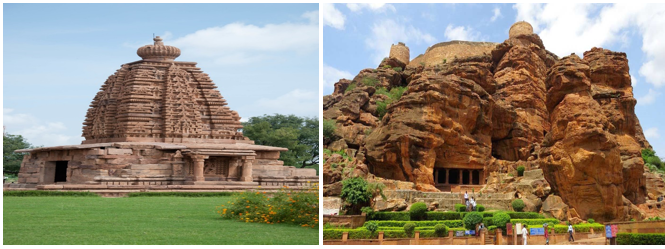Art and Architecture is one of the important area from which UPSC ask questions. Year after year, number of questions asked by UPSC from Architecture part has increased and this has relentlessly put excessive emphasis on Architecture aspect so that , it could be given more attention and prepare not only from prelims point of view but, also from mains point of view. Architecture of India can be categorised on various dimensions/parameters like:
- On the basis of Phases (Ancient – Medieval- Modern)
- On the basis of Material used (Rock cut architecture, Bronze Art in India)
- On the basis of the Religion (Jain Architecture, Buddhist Architecture)
- On the basis of Region (North, south, East, West)
- On the basis of Dynasty (Maurya, Gupta, Cholla)
Types of Questions Asked from Architecture Portion:
Aspirants are advised to analyse the types of question asked by UPSC, as this analysis will give an idea about from which all areas questions can be asked and which all types are questions asked. Self-analysis power is something that should be possessed by each and every aspirants In order to be successful in this examination.
|
Mixed Architecture Type Question |
Time Period Architecture Type Question |
|
Q. With reference to the history of Indian rock-cut architecture, consider the following statements:
Which of the above statements is/are correct? a) 1 only b) 2 and 3 only c) 3 only d) 1, 2 and 3 |
Q. With reference to the art and archaeological history of India, which one among the following was made earliest? a) Lingaraja Temple at Bhubaneswar b) Rock-cut Elephant at Dhauli c) Rock-cut Monuments at Mahabalipuram d) Varaha Image at Udayagiri |
Understand the Key Difference:
It highly advisable that aspirants should understand the key difference between terminologies, the architecture form or even the dynastic methodologies of formation of their architecture. Without having the art of identification of key difference between different aspects associated with Architecture form, it will be difficult in solving the questions as the aspirants may have forget the revised areas, which may make daunting task in preparation of civil services examination. For example, if any aspirant is reading about the types of temple architecture then, it should be self-understood that aspirants should go for key differentiation like;
|
Nagara Style |
Dravida Style |
Vesara Style |
|
|
|
Source to Cover Architecture Topics:
Aspirants can prepare Architecture topics by reading old NCERT books, Tamil Nadu state books, or if they want they can read a Cultural History of India by AL Basham for deeper understanding. However, aspirants are advised to read selective topics from AL Basham books as this book is lengthy and time consuming.
Aspirants should also track down the current affairs for preparation of Architecture portion as majority of the questions which are asked by UPSC has the probability of being in News in last one to two years. However, aspirants should remember that the pattern of asking question by UPSC is not like they ask directly from the current issues of the concerned topic. On the contrary, question will be asked in more of static inclined portion rather than dynamic portion or mixed of both.
More than 60% percent of the questions on Architecture would be certainly asked from the expected zone of mentioned topics so, aspirants are being advised to go thorough in their preparation by adopting topic-wise covering approach. Most important aspect that aspirants should remember that, they need to clear the prelims and need not require to achieve highest marks, as the prelims marks will not be counted for the final result, hence save your stamina for the UPSC Civil Services mains and interview Exam. Don’t forget the ultimate mantra i.e. to revise, revise, and recall. Revise and revise and revise those marked sources or the notes that have been made by any aspirant.
Related Articles





